hydrogen fuel cell
Latest
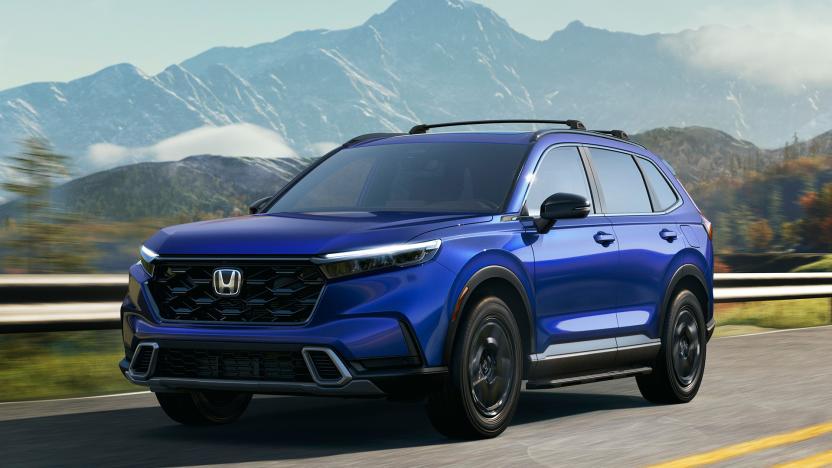
Honda will start US production of hydrogen fuel cell vehicles in 2024
Honda will begin making fuel cell cars in the US in 2024, starting with a vehicle based on the CR-V.
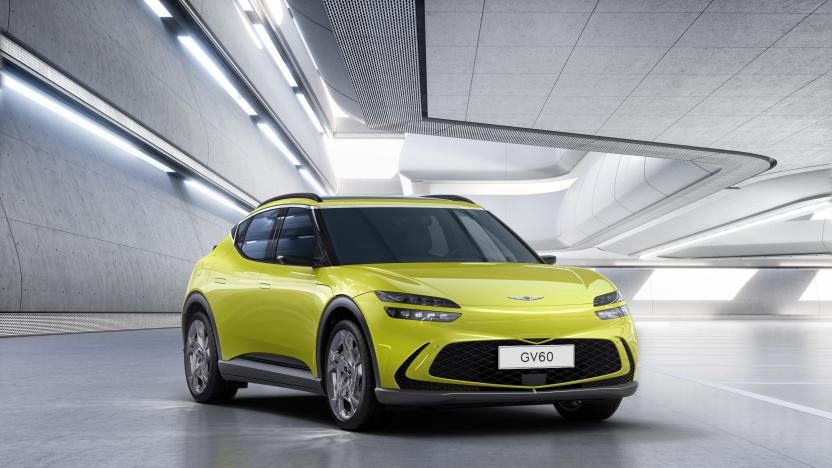
Hyundai's Genesis brand will switch entirely to electric powertrains in 2025
Genesis announced that every new model it makes after 2025 will be an electric vehicle. The company expects to have eight EV models available for sale in 2030 and sell around 400,000 of them annually.

President Biden wants half of new vehicles to be zero-emissions by 2030
President Biden is signing an order that aims to make half of all new vehicles sold zero-emissions capable by 2030, including pure EVs and plug-in hybrids.

Jaguar Land Rover to test a hydrogen fuel cell-powered Defender this year
Jaguar is currently developing a hydrogen fuel cell-powered Defender.
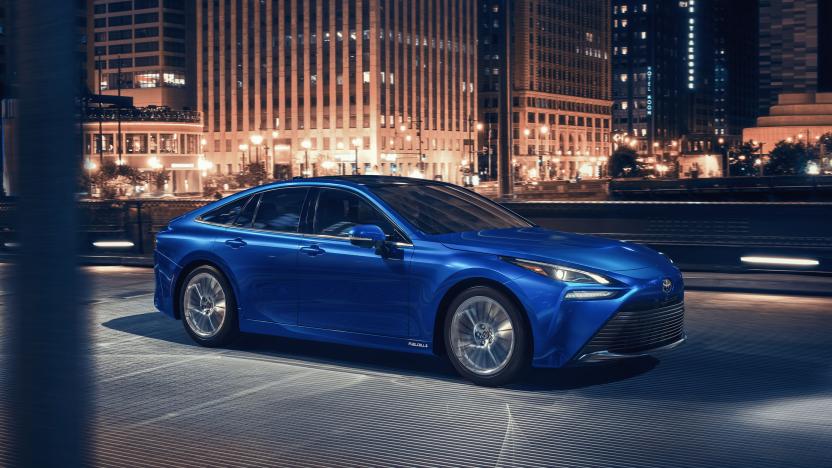
Toyota’s 2021 Mirai fuel-cell sedan looks great, trapped in California
For 2021 Toyota gave its hydrogen fuel-cell vehicle, the Mirai, a design and tech makeover. It's more efficient and stylish, but one thing Toyota hasn't fixed is the US' hydrogen fueling infrastructure.
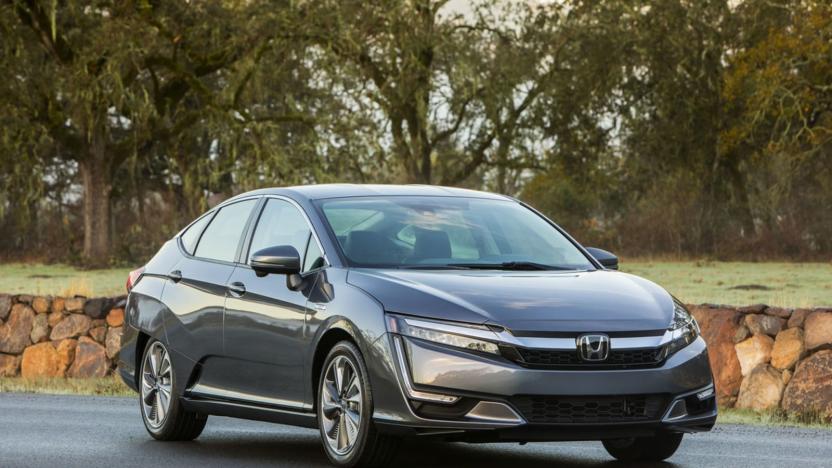
Honda will discontinue its Clarity EV in 2020
Honda is discounting the pure-electric version of its lease-only Clarity, Autoblog reports. It appears that Honda will continue to produce the plug-in hybrid and hydrogen fuel cell Clarity models, at least in 2020.
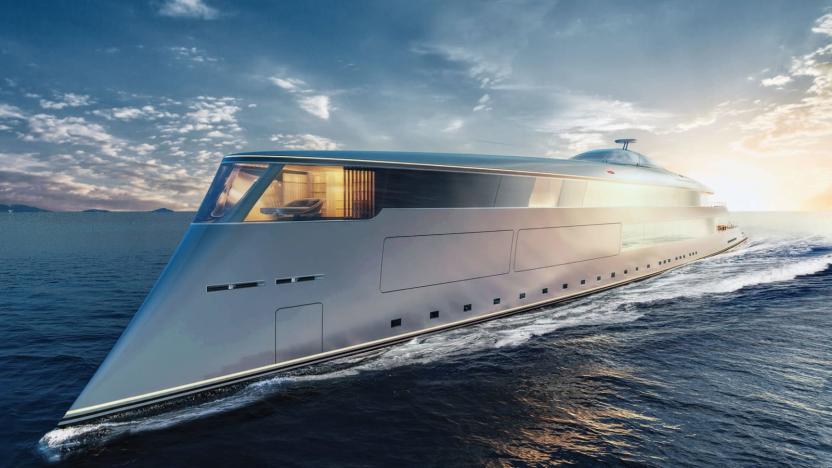
Bill Gates is reportedly the first to buy a hydrogen-powered 'superyacht' (updated)
Bill Gates' investments in eco-friendly tech might include one of the more conspicuous symbols of his wealth. The Telegraph claims former Microsoft chief has tasked Feadship with building a vessel inspired by Sinot's Aqua, the world's first hydrogen fuel cell-based "superyacht." The roughly $644 million, 370-foot boat would have all the trappings of wealth, including five decks, space for 14 guests and 31 crew members and even a gym, but it would run on two 1MW motors fuelled by supercooled hydrogen tanks.

Skai could be the first fuel cell-powered flying taxi
Flying taxi designs are seemingly ubiquitous these days, but a startup is betting that its choice of powerplant could help it stand out. Alaka'i has unveiled Skai, a flying taxi that will run on hydrogen fuel cells (the first of its kind, the company claimed) you normally only see on the ground. The technology will reportedly allow Skai to fly for up to four hours with a 400-mile range, but without an environmental hit or long downtimes -- it can top up in less than 10 minutes. It will also carry up to five people or a maximum payload of 1,000lbs.

Hyundai’s Nexo makes a case for fuel-cell SUVs
The future of hydrogen fuel cell cars is still in doubt. It all comes down to infrastructure and there aren't enough stations for most to even consider purchasing a vehicle that emits water instead of pollutants. Still, that hasn't stopped Hyundai from producing a legitimate reason why the infrastructure problem should be tackled in earnest.

What you need to know about hydrogen fuel cell vehicles
Damn the torpedoes (and Teslas)! Two of Japan's biggest automakers are about to make sizable wagers on a different kind of clean fuel tech: hydrogen power. Toyota will launch the $57,500 Mirai fuel cell vehicle (FCV, above) next year, while hydrogen veteran Honda will out a model in 2016. But wait, aren't EVs the last word in green cars? Fuel cell cars are EVs, in a way, but you can fill one up with hydrogen in five minutes rather than waiting hours for a charge. The only way to do that in an electric vehicle (EV) is by swapping the entire battery. So why is there exactly one production FCV available to buy today, but EVs everywhere? That's a tale of efficiency, fuel, pollution and politics.

Upp comes to the UK with the promise of hydrogen-fuelled device charging
If your smartphone dips into the red while you're out of the house, why scrabble for a portable battery when you can recharge with hydrogen? That's the sales pitch being made for the Upp, anyway. Intelligent Energy's first fuel cell charger is now available in Apple Stores across the UK, as well as on the Upp website. It gives power-hungry gadget fans a cleaner way to keep their devices topped up, but inevitably, there are some caveats. For one, the Upp charger will set you back a whopping £149, an amount that far exceeds the asking price for a handful of portable batteries. For another, the device is a little large and cumbersome; this isn't something you can just slide into a handbag or jacket pocket.

Rohm showcases colorful solid hydrogen-source fuel cell chargers at CEATEC
You know what makes a fuel cell charger in your pocket a little less frightening? Colors! CEATEC mainstay Rohm has arrived back in Japan with a new set of hydrogen-source fuel cell chargers, with the latest prototype lot boasting a litany of new hues that may very well match up with that iPhone 5c you're (presumably) picking up soon. The actual technology used within hasn't changed from last year, but the company is evidently considering the release of such portable chargers for those who'd prefer something a bit less drab. We're told that a fully-fueled pack can keep the average smartphone alive for twice as long as it would otherwise last, but as has become the norm at this show, there's nary a hint of a price / release date. Mat Smith contributed to this report.

Rohm 5Wh hydrogen fuel cells power up smartphones, ready for the trash after one charge
Rohm's hydrogen fuel cells are meant to power smartphones and other mobile devices, but unlike other juicing-up solutions, the cells are only good for one charge. Rohm says disposable fuel cells can be made smaller and lighter than their multi-use counterparts, and as the only byproduct is hydrogen, the company is touting the cells' eco-friendliness. The system generates electricity by using hydrogen that's created by the reaction of a metal material and water. While the device we saw here at CEATEC is a prototype, Rohm may offer its recharging system as both a smartphone case and a USB-attachable juicepack. Each offers 5Wh and can fully charge a handset once. There's also a 200W power generator, which certainly stretches the meaning of portable but can keep a laptop, LCD TV and a peripheral or two going for three to four hours. Rohm says its fuel cells will see a commercial release some time in 2013; for now you can get a sneak peek in our hands-on gallery below. Zach Honig contributed to this report.

Mercedes slaps sheet of LEDs on the side of an F-Cell, turns car into a chameleon
It's not often that folks want to hide the fact that they're driving a Mercedes, what with plenty of them being among of the finest motorcars on the road. However, as part of a marketing plan to call attention to its zero-emissions F-Cell model, the German marque swathed a side of one in LEDs to give it the ultimate in camouflage. You see, in addition to that makeshift display, a Canon 5D Mark II was mounted on the other side of the car so that video of its surroundings could be shown on the LED bodywork -- rendering the car all but invisible to onlookers, as long as they're staring at the left side, of course. Go ahead, head on down to see the magic of digital camo for yourself in the video after the break.

Microbial fuel cell produces hydrogen from wastewater without wasting energy
Back in 2005, Bruce Logan and his team of Penn State researchers developed a microbial fuel cell capable of converting poop into power. Now, Logan has refined his system to the point where it can produce hydrogen from wastewater or biodegradable organic materials without using a drop of grid electricity, and without emitting even a hint of carbon dioxide. His approach, outlined in the September 19th issue of the Proceedings of the National Academy of Sciences, involves something known as reverse-electrodialysis (RED) -- a process that harvests energy from the ionic discrepancy between fresh and salt water. Logan's bacterial hydrolysis cell (pictured left) features a so-called RED stack that's comprised of alternating positive and negative ion exchange membranes, which it uses to split water molecules into hydrogen and oxygen. Normally, this process would involve about 25 pairs of membranes, but by using RED technology in conjunction with electricity-producing exoelectrogenic bacteria, Penn State's team was able to extract hydrogen with just five membrane pairs. All told, Logan's cells proved to be about 58 to 64 percent energy efficient, while producing between 0.8 to 1.6 cubic meters of hydrogen for every cubic meter of liquid that passed through the system. The researchers' results show that only one percent of that energy was used to pump water through the cells, which are completely carbon neutral, as well. According to Logan, this breakthrough demonstrates that "pure hydrogen gas can efficiently be produced from virtually limitless supplies of seawater and river water and biodegradable organic matter." Somewhere, the US Navy is taking scrupulous notes. Full PR after the break. [Image courtesy of Penn State / Bruce Logan]

Mercedes-Benz's hydrogen-powered F125! concept slips out ahead of Frankfurt
Mercedes-Benz is certainly no stranger to hydrogen-powered fuel cell vehicles, and it looks like the automaker is now about to show off its latest concept at the Frankfurt Motor Show. That's dubbed the F125! (apparently pronounced F one twenty FIVE), and it promises a top speed of 137 miles per hour, 0 to 62 in 4.9 seconds, and 100 kilometers on 0.79 kilograms of hydrogen (or 621 miles on a full tank). Apparently, the concept is also intended to demonstrate the design direction for 2025 CL-Class, although there's no indication as of yet that Mercedes-Benz plans to put a hydrogen-powered CL-Class into production. Hit the links below for a few more shots that have leaked out ahead of the show.

Navy tests bacteria-powered hydrogen fuel cell, could start monitoring your underwater fight club
Microbial fuel cells aren't exactly new, but microbial fuel cells scouring the ocean floor? Now that's an initiative we can get behind. The Naval Research Laboratory is currently toying around with a so-called Zero Power Ballast Control off the coast of Thailand, presumably looking for treasures dropped from the speedboat of one "Alan Garner." Purportedly, the newfangled hydrogen fuel cell relies on bacteria to provide variable buoyancy, which allows an autonomous ocean sensor to move up and down water columns with little to no effort. Furthermore, it's able to get its energy from microbial metabolism (yeah, we're talking about hot air), and while it's mostly being used to measure things like temperature and pressure, it could be repurposed for more seirous tasks -- like mine detection. There's no clear word yet on when America's Navy will have access to this stuff, but if we had to guess, they've probably be using it behind our backs for the better part of a score. [Image courtesy of U.S. Navy Reserve / Tom Boyd]

Shell opens America's first pipelined hydrogen-fueling station in Southern California
Residents of SoCal's Torrance should consider themselves lucky, as they're now living in America's first-ever city to have a pipelined hydrogen-fueling station. You can thank Shell and Toyota for picking up this government-funded green project. Sure, while the few other hydrogen stations still rely on delivery by supply truck (presumably running on diesel, ironically), this nevertheless marks a new milestone for our squeaky clean fuel, and it's only a matter of time before more stations get piped up to Air Products' hydrogen plants. If there's any indication of a time frame, Wired reminds us that 2015 should see the arrival of many new mass-market hydrogen cars from Toyota, Honda, and Mercedes-Benz. Not long to go now, fellow tree huggers.

RC car runs on soda can rings, Doc Brown approves (video)
Many a future engineer was inspired by Back to the Future's Dr. Emmett "Doc" Brown, and not just because he proved that unkempt eccentrics could truly change the world. No, he also pioneered Mr. Fusion, the coffee maker/cold fusion reactor that turned garbage into energy. And while we're still waiting for cold fusion and time travel to become a reality, today we're all one step closer to waste-powered cars. A pair of Spanish engineers have recently unveiled the dAlH2Orean (see what they did there?), a R/C car that runs on aluminum. Dropping a few soda can tabs into a tank of sodium hydroxide produces enough hydrogen to power the little speedster for 40 minutes – at almost 20mph. Hit the video above to see it in action, along with your daily helping of the Chemical Brothers. Fitting.

Fuel cells get stronger, potentially cheaper with graphene, ITO
As the sustainable Juggernaut of fuel cell vehicles (FCV) powers ever forward, a group of scientists are cooking up ways to make the alternative energy source more durable and even cheaper. By combining graphene -- think pencil lead -- and indium tin oxide (ITO) nanoparticles, the team produced a catalytic material that is both stronger and more chemically active than the usual catalytic combo. Fuel cells typically use a chemical catalyst like platinum, sitting atop a base of black carbon or metal oxides, to break down oxygen and hydrogen gases, creating water in the process -- thing is, carbon is easily eroded by the resulting water, and metal oxides, while more stable, are less conductive. Using graphene -- which because of its porousness erodes less quickly -- in combination with the stable ITO and platinum nanoparticles, researchers have created what could be referred to as a super fuel cell -- a stronger, longer lasting, and potentially cheaper version of the alternative energy source. Unfortunately, without enough hydrogen filling stations, these super fuel cells won't come to anyone's rescue anytime soon.














